103. Once again. On Easter Island Saturn (Makoi) was
like a Cosmic Tree = Thespesia populnea, we can understand from Manuscript E:
North of the equator and in Rome the 'Oak' of Father
Light (Jupiter, Hercules) had been sacrificed in fire in
'June 24 = St John's Day:

... The manner of his death can be
reconstructed from a variety of legends,
folk-customs and other religious survivals.
At mid-summer, at the end of a half-year
reign, Hercules is made drunk with mead and
led into the middle of a circle of twelve
stones arranged around an oak, in front of
which stands an altar-stone; the oak has
been lopped until it is T-shaped. He is
bound to it with willow thongs in the
'five-fold bond' which joins wrists, neck,
and ankles together, beaten by his comrades
till he faints, then flayed, blinded,
castrated, impaled with a mistletoe stake,
and finally hacked into joints on the
altar-stone. His blood [vai-ku-ra] is caught in a basin
and used for sprinkling the whole tribe to
make them vigorous and fruitful. The joints
are roasted at twin fires of oak-loppings,
kindled with sacred fire preserved from a
lightning-blasted oak or made by twirling an
alder- or cornel-wood fire-drill in an oak
log. The trunk is then uprooted and split
into faggots which are added to the flames.
The twelve merry-men rush in a wild
figure-of-eight dance around the fires,
singing ecstatically and tearing at the
flesh with their teeth. The bloody remains
are burnt in the fire, all except the
genitals and the head. These are put into an
alder-wood boat and floated down the river
to an islet; though the head is sometimes
cured with smoke and preserved for oracular
use. His tanist succeeds him and reigns for
the remainder of the year, when he is
sacrificially killed by a new Hercules
...
Whereas Makoi and the rest of the Explorers
(planets) were making Land Fall in Maro
10 (= "June 10).
... During his descent the ancestor still
possessed the quality of a water spirit, and
his body, though preserving its human
appearance, owing to its being that of a
regenerated man, was equipped with four
flexible limbs like serpents after the
pattern of the arms of the Great Nummo. The
ground was rapidly approaching. The ancestor
was still standing, his arms in front of him
and the hammer and anvil hanging across his
limbs. The shock of his final impact on the
earth when he came to the end of the
rainbow, scattered in a cloud of dust the
animals, vegetables and men disposed on the
steps. When calm was restored, the smith was
still on the roof, standing erect facing
towards the north, his tools still in the
same position. But in the shock of landing
the hammer and the anvil had broken his arms
and legs at the level of elbows and knees,
which he did not have before. He thus
acquired the joints proper to the new human
form, which was to spread over the earth and
to devote itself to toil
...

But the stars were the same, the star time
was the same:
 |
 |
 |
22 |
|
Ga1-29 |
Ga1-30 |
Ga2-1 |
|
TEJAT PRIOR
(Η Gemini) |
FURUD
(Ζ Canis Majoris) |
TEJAT POSTERIOR
(Μ Gemini) |
|
INVISIBLY CLOSE TO THE SUN
(helical dates): |
18 |
|
MAY 14 |
15 |
16 (136 = 408 / 3) |
17 |
18 (*58 = 29 + 29) |
19 (*59 = *123 - 64) |
 |
 |
 |
 |
 |
 |
|
Ga2-24 (29
+ 25) |
Ga2-25 |
Ga2-26 (29 + 27) |
Ga2-27 (π) |
Ga2-28 |
Ga2-29 |
|
φ Gemini
(118.4) |
DRUS
= χ Carinae
(119.9) |
ω Cancri
(120.2) |
8h (121.7)
χ Gemini
(121.0),
NAOS
= Ζ Puppis
(121.3) |
ρ Puppis (122.0),
HEAP OF FUEL
= μ Cancri
(122.1), ζ Monocerotis(122.3),
ψ Cancri (122.6),
REGOR = γ Velorum
(122.7) |
TEGMINE
= Ζ Cancri
(123.3) |
|
July 17
(*118) |
18 |
19 (200) |
20 (*121 = 11 * 11) |
21 |
22 / 7
(*123) |
|
°July 13 |
14 |
15 (196) |
16 |
17 (*118 = 4 * 29½) |
18 |
|
'June 20 |
SOLSTICE |
22 (200 - 27) |
23 |
ST JOHN'S DAY |
25 (*96) |
|
... Midsummer is the flowering
season of the oak, which is the
tree of endurance and triumph,
and like the ash is said to
'court the lightning flash'. Its
roots are believed to extend as
deep underground as its branches
rise in the air - Virgil
mentions this - which makes it
emblematic of a god whose law
runs both in Heaven and in the
Underworld ... The month,
which takes its name from
Juppiter the oak-god, begins on
June 10th and ends of July 7th.
Midway comes St. John's Day,
June 24th, the day on which the
oak-king was sacrificially
burned alive. The Celtic year
was divided into two halves with
the second half beginning in
July, apparently after a
seven-day wake, or funeral
feast, in the oak-king's honour
... |
|
"June 6 (157) |
Maro
7 |
8 |
9 (*80 = *121 - 41) |
HANGA
TE PAU |
11 (*82 = *96 - *14) |
|
Makoi
named the place Hanga Te Pau,
'the landing site of Ira'.
So that they would remember (?
he aringa, literally, 'as
face'), the open side of
Hanga Te Pau was given this
name. Ira got up. They
all climbed to the top of the
hill. They climbed up on the
tenth day of the month of June 'Maro'.
They reached
the side crater (te
manavai) and looked around
carefully. Makoi said,
'This is the Manavai of
Hau Maka.' They
climbed farther and reached the
top. They saw the dark abyss and
the large hole (of the crater
Rano Kau). They all said,
'Here it is, young men, the dark
abyss of Hau Maka.' They
made camp and constructed a
house. Kuukuu got up,
worked the ground, and heaped up
the earth for the yam roots.
They climbed farther and reached
the top. They saw the dark abyss
and the large hole (of the
crater Rano Kau). They
all said, 'Here it is, young
men, the dark abyss of Hau
Maka.'
They made camp and constructed a
house. |
... The evening of 23 June, St. John's Eve,
is the eve of celebration before the Feast
Day of Saint John the Baptist. The Gospel of
Luke (Luke 1:36, 56-57) states that John was
born about six months before Jesus;
therefore, the feast of John the Baptist was
fixed on 24 June, six months before
Christmas Eve ...
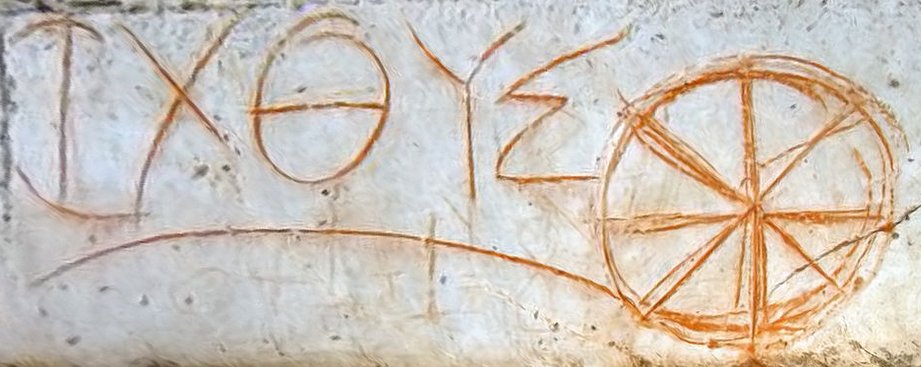
The Baptist was at the opposite side of the year
compared to where the Hawaiian king recovered his
power:
... in
the ceremonial course of the coming year, the king
is symbolically transposed toward the Lono
pole of Hawaiian divinity ... It need only be
noticed that the renewal of kingship at the climax
of the Makahiki coincides with the rebirth of
nature. For in the ideal ritual calendar, the
kali'i battle follows the autumnal appearance of
the Pleiades, by thirty-three days - thus precisely,
in the late eighteenth century, 21 December, the
winter solstice. The king returns to power with the
sun. Whereas, over the next two days, Lono
plays the part of the sacrifice
...
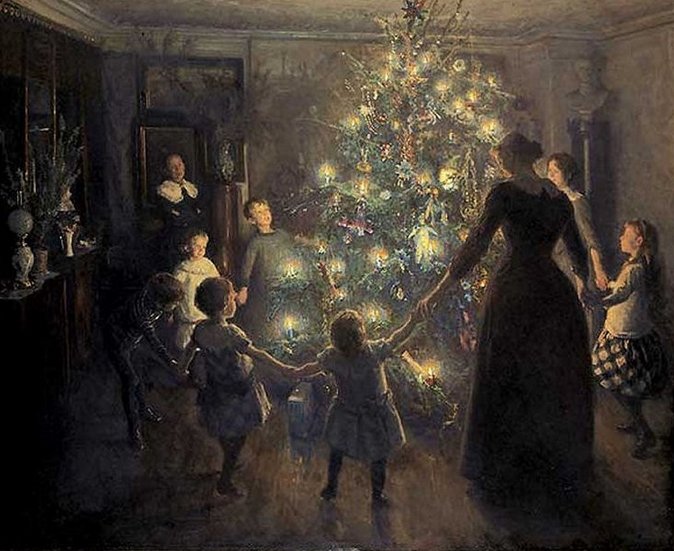
... Hercules first appears in legend as a
pastoral sacred king and, perhaps because
shepherds welcome the birth of twin lambs,
is a twin himself. His characteristics and
history can be deduced from a mass of
legends, folk-customs and megalithic
monuments. He is the rain-maker of his tribe
and a sort of human thunder-storm. Legends
connect him with Libya and the Atlas
Mountains; he may well have originated
thereabouts in Palaeolithic times. The
priests of Egyptian Thebes, who
called him Shu, dated his origin as
17,000 years before the reign of King
Amasis. He carries an oak-club, because the
oak provides his beasts and his people with
mast and because it attracts lightning more
than any other tree. His symbols are the
acorn; the rock-dove, which nests in oaks as
well as in clefts of rocks; the mistletoe,
or Loranthus; and the serpent. All
these are sexual emblems. The dove was
sacred to the Love-goddess of Greece and
Syria; the serpent was the most ancient of
phallic totem-beasts; the cupped acorn stood
for the glans penis in both Greek and
Latin; the mistletoe was an all-heal and its
names viscus (Latin) and ixias
(Greek) are connected with vis and
ischus (strength) - probably because of
the spermal viscosity of its berries, sperm
being the vehicle of life.
This Hercules is male leader of all
orgiastic rites and has twelve archer
companions, including his spear-armed twin,
who is his tanist or deputy. He
performs an annual green-wood marriage with
a queen of the woods, a sort of Maid Marian.
He is a mighty hunter and makes rain, when
it is needed, by rattling an oak-club
thunderously in a hollow oak and stirring a
pool with an oak branch - alternatively, by
rattling pebbles inside a sacred
colocinth-gourd or, later, by rolling black
meteoric stones inside a wooden chest - and
so attracting thunderstorms by sympathetic
magic ...
... The divine names Bran, Saturn, Cronos
... are applied to the ghost of Hercules
that floats off in the alder-wood boat after
his midsummer sacrifice. His tanist, or
other self, appearing in Greek legend as
Poeas who lighted Hercules' pyre and
inherited his arrows, succeeds him for the
second half of the year; having acquired
royal virtue by marriage with the queen, the
representative of the White Goddess, and by
eating some royal part of the dead man's
body - heart, shoulder or thigh-flesh.
He is in turn succeeded by the New Year
Hercules, a reincarnation of the murdered
man, who beheads him and, apparently, eats
his head. This alternate eucharistic
sacrifice made royalty continous, each king
in turn the Sun-god beloved of the reigning
Moon-goddess. But when these cannibalistic
rites were abandoned and the system was
gradually modified until a single king
reigned for a term of years,
Saturn-Cronos-Bran became a mere Old Year
ghost, permanently overthrown by
Juppiter-Zeus-Belin though yearly conjured
up for placation at the Saturnalia or Yule
feast
...
Possibly the Baptist was
regarded as the tanist of Christ. If so there
could be an opposition between Ira
(representing the hot Great Fire in the Sky) and Makoi
(representing the complementary pole of cool fresh
Sky Water). One
of the names of Saturn was Dripping Water:
|
Hawaiian Islands |
Society Islands |
New Zealand |
Pukapuka |
|
Naholoholo,
'Swift-running'
Makulu,
'Dripping-water' |
Fetu-tea,
'Pale-star' |
Parearau,
'Circlet'
Kopu-nui,
'Great-paunch' |
Mata-tea,
'Pale-star' |
...
The Mahabharata insists
on six as the number of
the Pleiades as well as of the
mothers of Skanda and
gives a very broad and wild
description of the birth and the
installation of Kartikeya
'by the assembled gods ... as
their generalissimo', which is
shattering, somehow, driving
home how little one understands
as yet.
The least which can be said,
assuredly: Mars was 'installed'
during a more or less close
conjunction of all planets; in
Mbh. 9.45 (p. 133) it is
stressed that the powerful gods
assembled 'all poured water upon
Skanda, even as the gods
had poured water on the head of
Varuna, the lord of
waters, for investing him with
dominion'. And this
'investiture' took place at the
beginning of the Krita Yuga,
the Golden Age
...

|
June solstice |
|
22 |
Well |
μ Gemini (Tejat Posterior) |
Tapir |
(95.4) |
June 24 (175) |
|
23 |
Ghost |
ρ Gemini ? |
Goat |
(112.1) |
Jul
11 (192) |
|
24 |
Willow |
δ Hydrae |
Stag |
(129.6) |
Jul 28 (209) |
|
25 |
Star |
α Hydrae (Alphard) |
Horse |
(142.3) |
Aug 10 (222) |
|
26 |
Extended Net |
ε Hydrae / μ Hydrae |
Ox |
(131.9 / 157.1) |
Jul 30 (211) /
Aug
25 (237) |
|
27 |
Wings |
α Crateris (Alkes) |
Snake |
(165.6) |
Sep 2 (245) |
|
28 |
Chariot |
γ Corvi (Gienah) |
Worm |
(185.1) |
Sep 22 (265) |
|
September equinox |
|
SWEET RAIN WATER: |
 |
 |
 |
 |
|
WELL |
MACAW |
QUETZAL |
RED
DEER |
|
9
Ch'en (180) |
10
Yax (Green) |
11
Sac (White) |
12
Ceh (240) |
|
In the Mayan
structure the first 20-day
month beyond high summer was
Ch'en - a well:
... The sign cauac,
wherever it could be pinned
down, appeared as a sort of
general time-count base.
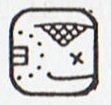
Alone, or with the
wing-affix ... and with
numerals, it is a fixed
variant for the Tun-sign.
This Morley was the first to
verify.
It is also the common
element in the four vinal
signs for Ch'en,
Yax, Sac, Ceh,
differentiated only by their
superfixes. Ch'en
means Well; Yax and
Sac means Green,
White; and the superfixes
are the characters fully
established for those
colors. The superfix for
Ceh means Red, but the
Maya and Quiché Ceh,
Quieh, mean Deer
... |
The circuit which Mars
produced by navigating backwards
in time-space could have inspired the idea
of the loop formed around the
Pegasus Square:
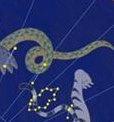
... Ancient
people were fascinated with
the periodic backward loops
turned by Mars every two
years ...
Which should
have required a
complementary (tanist) loop
close to the head of the
Water Serpent - not
around the place of birth
(the 'House') but around the
'Tree':

Alphard was the 4th star
'pillar' in the Tahitian list
and from there to Antares
there were *249 - *142 = 107
days. 471 (number of glyphs
on the G tablet) - 107 = 364
(= 52 weeks).
...
Interestingly, since another meaning
of shi is 'death', the number
4 is considered unlucky. For
example, the floor numbering in
hotels sometimes jumps mysteriously
from 3 to 5; it is also considered
unlucky to give four of something as
a present ...
From mago with
his mouth closed in Ga3-23 (82) up to
and including mago
with open mouth (vaha mea) in Ga7-16
(185) there were 186 - 82 =
104 (= 4 * 26) days (= 364 -
260).
|
INVISIBLY CLOSE
TO THE SUN
(helical dates): |
|
JUNE 7 (*78) |
8 |
9 |
10 (161) |
11 |
12 |
 |
 |
 |
 |
 |
 |
|
Ga3-19 (29 + 49) |
Ga3-20 |
Ga3-21 |
Ga3-22 |
Ga3-23 |
Ga3-24 (29 + 54) |
|
The Knot (Ukdah) |
Rishu A.-13 (Head
of the Lion)
ψ Leonis
(146.4),
RAS ELASET
AUSTRALIS = ε
Leonis
(146.6) |
VATHORZ PRIOR =
υ Carinae
(147.9) |
|
Star-25 (Horse)
/
ANA-HEU-HEU-PO-5
(Pillar where
debates were
held)
ALPHARD = α
Hydrae
(142.3),
ω Leonis
(142.6),
τ¹
Hydrae
(142.7) |
Al Tarf-7
ψ Velorum
(143.3),
ALTERF (The End)
= λ Leonis,
τ² Hydrae
(143.4), ξ
Leonis (143.5) |
A Hydrae
(144.1) |
UKDAH
= ι Hydrae
(145.4),
κ Hydrae
(145.5),
SUBRA = ο Leonis
(145.8) |
|
August 10 |
11 |
12 |
13 |
14 (*146) |
15 (227) |
|
°August 6 |
7 |
8 (220) |
9 |
10 |
11 (*143) |
|
'July 14 |
15 |
16 |
17 (*118 = 4 *
29½) |
18 |
19 (200) |
|
SIRIUS |
"July 1 |
Anakena 2 |
3 (*104) |
4 (185) |
HANGA TE PAU |
|
... On the fifth
day of the month
of July ('Anakena'),
they all got up,
went downhill,
went on, and
reached Hanga
Te Pau. |
|
CLOSE TO THE
FULL MOON (and
nakshatra
dates): |
|
DECEMBER 7 |
8 |
9 |
10 |
11 (345) |
12 (*266) |
|
BUNDA
(Foundation) /
KAKKAB
NAMMAΧ (Star of
Mighty Destiny) |
θ Piscis
Austrini
(330.1), λ Oct.
(330.7) |
|
Al Sa'd al
Su'ud-22 /
Emptiness-11
(Rat)
TSIN = 36
Capricorni
(325.2),
ALPHIRK = β
Cephei
(325.7),
SADALSUD = Β
Aquarii,
ξ Gruis (325.9) |
no star listed
(326) |
CASTRA = ε
Capricorni
(327.2),
BUNDA
= Ζ Aquarii
(327.5) |
Mahar sha
hi-na Shahū-26
(Western One in
the Tail of the
Goat)
NASHIRA = γ
Capricorni
(328.0), ν Oct.
(328.3),
AZELFAFAGE = π¹
Cygni,
κ Capricorni
(328.7) |
Arkat sha
hi-na Shahū-27
(Eastern One
in the Tail of
the Goat)
ENIF (the Nose)
= ε Pegasi,
ERAKIS = μ
Cephei
(329.2),
46
Capricorni, JIH
(the Sun) = κ
Pegasi
(329.3), ι
Piscis Austrini
(329.4), λ
Capricorni
(329.6), ν
Cephei (329.7),
DENEB
ALGIEDI = δ
Capricorni
(329.8) |
|
February 9 (40) |
10 |
11 |
12 (408) |
13 (*329) |
All Hearts' Day |
|
... On February
9 the Chorti
Ah K'in,
'diviners',
begin the
agricultural
year. Both the
260-day cycle
and the solar
year are used in
setting dates
for religious
and agricultural
ceremonies,
especially when
those rituals
fall at the same
time in both
calendars. The
ceremony begins
when the
diviners go to a
sacred spring
where they
choose five
stones with the
proper shape and
color. These
stones will mark
the five
positions of the
sacred cosmogram
created by the
ritual.
When the stones
are brought back
to the
ceremonial
house, two
diviners start
the ritual by
placing the
stones on a
table in a
careful pattern
that reproduces
the schematic of
the universe. At
the same time,
helpers under
the table
replace last
year's diagram
with the new
one. They
believe that by
placing the
cosmic diagram
under the base
of God at the
center of the
world they
demonstrate that
God dominates
the universe.
The priests
place the stones
in a very
particular
order. First the
stone that
corresponds to
the sun in the
eastern, sunrise
position of
summer solstice
is set down;
then the stone
corresponding to
the western,
sunset position
of the same
solstice. This
is followed by
stones
representing the
western, sunset
position of the
winter solstice,
then its
eastern, sunrise
position.
Together these
four stones form
a square. They
sit at the four
corners of the
square just as
we saw in the
Creation story
from the Classic
period and in
the Popol Vuh.
Finally, the
center stone is
placed to form
the ancient
five-point sign
modern
researchers
called the
quincunx ... |
|
°February 5 |
6 |
7 |
8 (*324) |
9 (40) |
10 |
|
'January 13
(378) |
14 |
15 (*300) |
16 |
17 |
18 (383) |
|
"December 30
|
Ko Koró
31 (*285) |
"January 1 |
Tua haro 2 |
3 (368) |
4 |
|
INVISIBLY
CLOSE TO THE
SUN (helical
dates): |
|
99 |
SEPTEMBER 20 |
21 (*184) |
EQUINOX |
23 |
24 |
25 (268) |
 |
 |
 |
 |
 |
 |
|
Ga7-14 |
Ga7-15 |
Ga7-16 |
Ga7-17 (186) |
Ga7-18 |
Ga7-19 |
|
|
|
ANTARES
(*249) |
|
|
|
|
November 23 |
24 |
25 (329) |
26 (*250) |
27 |
28 |
|
°November 19 |
20 |
21 (325 =
314 + 11) |
22 |
23 |
24 (*248) |
|
19 - 11 = 8 |
9 November |
(314 = 288 +
26) |
11 |
12 (*236 = 4
* 59) |
13 |
|
'October 27
(300) |
28 |
29 (*222) |
30 |
31 (= 17 +
14) |
'November 1 |
|
"October 13 |
14 |
Tagaroa Uri
15 (288) |
16 |
17 (290 =
331 - 41) |
18 |
|
... The
canoes of
Ava Rei Pua
and of
Hotu
were seen
near the
(off-shore)
islets. On
the
fifteenth
day of the
month of
October (tangaroa
uri)
the canoe of
Hotu
and the
canoe of
Ava Rei Pua
landed. On
the
fifteenth
day of the
month of
October (tangaroa
uri),
Nonoma
left the
house during
the night to
urinate
outside. At
this point
Ira
called out
to Nonoma,
'Look at the
canoe!'
Nonoma
ran, he
quickly went
to Te
Hikinga Heru
(a ravine in
the side of
the crater
Rano Kau)
and looked
around.
There he saw
the double
canoe way
out near the
(offshore)
islets, and
the two
(hulls of
the canoe)
were lashed
together. He
ran and
returned to
the front of
the house.
He arrived
and called
into the
house: 'Hey
you! This
canoe has
arrived
during the
night
without our
noticing
it!' Ira
asked
Nonoma,
'Where is
the canoe,
which you
say is lying
out there
(in the
water)?'
Nonoma's
voice came
back: 'It is
out there
(in the
water) close
to the
(offshore)
islets!
There it
lies, and
the two
(hulls) are
lashed
together.'
The four of
them
(corrected
for 'the six
of them')
went out and
picked up
leaves (on
branches) to
give
signals.
They picked
them up,
went and
arrived at
Te
Hikinga
and saw the
canoe.
Raparenga
got up,
picked up
the leaves,
took them in
his hands,
and waved,
waved,
waved, waved
... |
|
... When the
Pope Gregory
XIII updated
the Julian
calendar he
did not
revise what
had gone
wrong before
325 AD (when
the Council
of Nicaea
was held).
Thus the
stars were
still 3-4
days 'out of
tune'
compared to
the new
calendar ...
the
Gregorian
'canoe' was
'crooked'.
His calendar
was not in
perfect
alignment
with the
ancient star
structure.
Because he
had avoided
to adjust
with the
effects of
the
precession
between the
creation of
the Julian
calendar and
the Council
of Nicaea in
325 A.D.
[The Julian
equinox was
in the 3rd
month of the
year and in
its 25th
day; 3-25.] |
The
name Makoi
could also have
alluded to
Seven-Macaw, the
vain-glorious bird
who imagined himself
to be the sun:

... This pot depicts
one of the Hero
Twins (One-Ahaw in
the Classic texts
and One-Hunaphu in
the K'iche' Popol
Vuh) and a great
bird who is trying
to land in a huge
ceiba tree heavy
with fruit. This
mythical bird is
Itzam-Yeh,
Classic prototype of
Wuqub-Kaqix,
'Seven-Macaw', of
Popol Vuh fame. In
that story, in the
time before the sky
was lifted up to
make room for the
light, the
vainglorious
Seven-Macaw imagined
himself to be the
sun. Offended by his
pride, the Hero
Twins humbled him by
breaking his
beautiful shining
tooth with a pellet
from their blowgun.
This pot shows
One-Ahaw aiming at
the bird as he
swoops down to land
in his tree. As
Itzam-Yeh lands
on his perch, the
text tells us he is
'entering or
becoming the
sky'. This
particular
'sky-entering' is
not the one
mentioned in the
Palenque text. It is
the final event that
occurred in the
previous creation
before the universe
was remade. Before
the sky could be
raised and the real
sun revealed in all
its splendor, the
Hero Twins had to
put the false sun,
Itzam-Yeh, in
his place. If the
date on this pot
corresponds to that
pre-Columbian event,
as we believe it
does, then
Itzam-Yeh was
defeated on
12.18.4.5.0.1
Ahaw 3
K'ank'in (May
28, 3149 B.C.).
After the new
universe was finally
brought into
existence, First
Father also entered
the sky by landing
in the tree, just as
Itzam-Yeh did
...
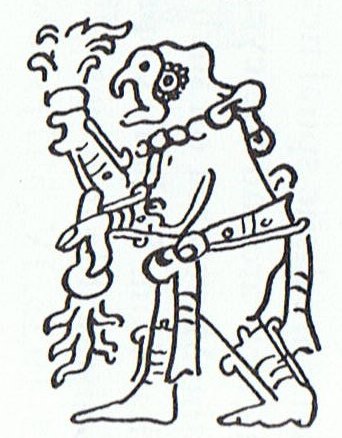
|
INVISIBLY
CLOSE TO
THE SUN
(helical
dates): |
|
MAY 20
(140) |
21 |
22 |
23 (*63) |
24 (144
= 12 *
12) |
 |
 |
 |
 |
 |
|
Ga3-1
(60) |
Ga3-2 |
Ga3-3 |
Ga3-4 |
Ga3-5 |
|
AL TARF
(The
End) = β
Cancri
(124.3)
RAS
ALGETHI
(α
Herculis) |
χ Cancri
(125.2),
BRIGHT
FIRE = λ
Cancri
(125.4) |
AVIOR =
ε
Carinae
(126.4),
φ Cancri
(126.8) |
ο Ursa
Majoris
(127.4) |
Pushya-8
υ Cancri
(128.1),
θ CANCRI
(128.2) |
|
July 23
(204) |
24
(*125) |
25 |
26 |
27 (208) |
|
°July 19
(200) |
20
(*121) |
21 |
22 / 7 |
23 (204) |
|
26 (177
= 6 *
29½) |
'June 27 |
28 |
29
(*100) |
SIRIUS |
|
"June 12
(*83) |
Maro
13 |
14 (165
+ 365) |
15 (531
= 18 *
29½) |
16 |
|
CLOSE TO
THE FULL
MOON
(and
nakshatra
dates): |
|
NOVEMBER
19 |
20 |
21 (325) |
23 (*246
= 6 *
41) |
23 |
|
GREDI
= α
Capricorni
(307.2),
σ
Capricorni
(307.5),
ALSHAT
= ν
Capricorni
(307.9) |
Al
Sa’d al
Dhabih-20
/
Ox /
Herd
Boy-9
(Buffalo)
DABIH =
β
Capricorni
(308.0),
κ
Sagittarii
(308.1),
SADIR =
γ Cygni
(308.4),
PEACOCK
= α
Pavonis
(308.7) |
OKUL = π
Capricorni
(309.6),
BOS = ρ
Capricorni
(309.9) |
ο
Capricorni
(310.2),
θ Cephei
(310.5) |
ROTTEN
MELON =
ε
Delphini,
φ
Pavonis
(311.2),
η
Delphini
(311.4),
ζ
Delphini,
ρ
Pavonis
(311.7) |
|
January
22 |
23 |
24
(*309) |
25 (390) |
26 |
|
°January
18 (384) |
19 |
20 |
21
(*306) |
22 |
|
'December
26 (360) |
27 |
28 |
29 |
30
(*284) |
|
"December
12 |
LUCIA |
Ko Koró
14 (348) |
15 |
16
(*270) |
|
Makoi
got up
and
began to
familiarize
himself
with the
(new)
land.
(This
took
place)
on the
fifteenth
day of
the
month of
June ('Maro').
He went
toward
the
sheer
face of
the
rocks (titi
o te
opata),
was
astonished
(aaa),
came up
to the
middle
(of the
outer
rim of
the
crater),
and
stood at
the very
edge.

He
looked
down and
saw the
'Pu
Mahore
of
Hau
Maka'
(on the
coast)
and
said,
'There
it is,
the hole
of the
mahore
fish of
Hau
Maka!'
He
turned
his face
and
looked
toward
the back
(i.e.,
in the
direction
of the
crater).
No
sooner
had he
seen how
the dark
abyss
opened
up
(below
him),
when a
fragrant
breeze
came
drifting
by.
Again
Makoi
said,
'This is
the dark
abyss of
Hau
Maka'.
He
turned
around,
walked
on in
utter
amazement,
and
arrived
at the
house.
He spoke
to
Ira,
'Hey
you, my
friends!
How
forgetful
we
(truly)
are.
This
place is
adequate
(?
tau
or
'beautiful'),
the dark
abyss
lies
there
peacefully!'
Ira
replied,
'And
what
should
that
remind
us of up
here?'
All
arose
and
climbed
up. They
went on
and
arrived;
they all
had a
good
look (at
the
inside
of the
crater).
They
returned
home and
sat
down.
Night
fell,
and they
went to
sleep. |
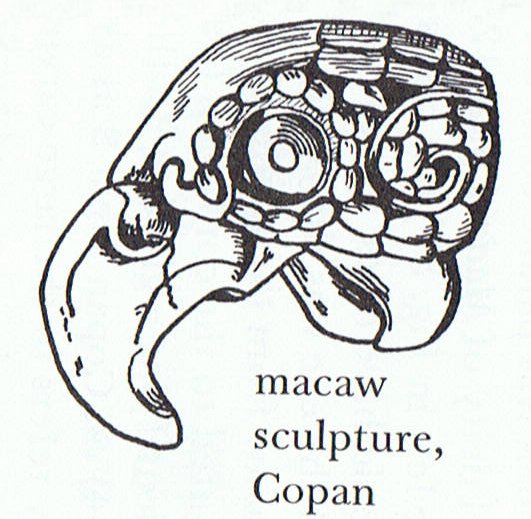 |
|
The 4
places
which
Makoi
saw by
himself:
Possibly
these
places
were
alluding
also to
the
change
from
Julian
spring
equinox
to
Gregorian
spring
equinox:
... When
the Pope
rearranged
the day
for
spring
equinox
from
number
84
('March
25) to
number
80
(ºMarch
21) the
earlier
Julian
structure
was
buried,
was
covered
up (puo).
At the
same
time the
Pope
deliberately
avoided
to
correct
the flow
of
Julian
calendar
days for
what he
may have
regarded
as 4
unneccesary
leap
days
prior to
the
Council
of
Nicaea.
Thus his
balance
sheet
for days
was in
order.
The day
numbers
counted
from the
equinox
were
increased
with 4
and this
was
equal to
allowing
the 4
'unneccessary'
leap
days to
remain
in
place.
But he
had
moved
spring
equinox
to a
position
which
was 4
days too
early
compared
to the
ancient
model
...
These '4
unneccessary
leap
days'
(prior
to the
Council
of
Nicaea)
were
equal in
number
to the
precessional
distance
in time
between
the Pope
and the
time of
rongorongo.
The
Gregorian
calendar
could
therefore
be
easily
understood
by the
Easter
Islanders.
The Pope
had
created
a
'crooked
calendar'
but
since
his time
the
precession
had
fixed it
...
 |
|
MAY 25
(5-25) |
26
(*266) |
27 |
28 (348
- 200 =
148) |
 |
 |
 |
 |
|
Ga3-6 |
Ga3-7 |
Ga3-8 |
Ga3-9
(68) |
|
Āshleshā
(Embrace)-9
/
Willow-24
(Stag)
π¹ Ursa
Majoris,
δ Hydrae (129.6),
AL
MINHAR
AL SHUJĀ
= σ Hydrae,
MUSEIDA
= π²
Ursae
Majoris
(129.9) |
Al
Nathrah
(Gap)-6
BEEHIVE
= ε
Cancri,
η
Pyxidis
(130.4),
XESTUS =
ο
Velorum
(130.5),
ζ
Pyxidis
(130.7),
ASCELLUS
BOREALIS
= γ
Cancri,
β
Pyxidis
(130.9) |
Extended
Net-26a
(Ox) /
Arkū-sha-nangaru-sha-shūtu-12
(Southeast
Star in
the
Crab)
η
Hydrae
(131.0),
ASCELLUS
AUSTRALIS
= δ
Cancri
(131.4),
KOO SHE
(Bow and
Arrow) =
δ
Velorum
(131.6),
α
Pyxidis
(131.8),
ε Hydrae
(131.9) |
ι Cancri
(132.0),
ρ Hydrae
(132.4) |
|
July 28 |
29
(*130) |
30 |
31 (212) |
|
°July 24 |
25 |
26
(*127) |
27 (208) |
|
'July 1 |
2 |
3 (*104) |
4 (185) |
|
"June 17
Te
Kioe Uri |
Maro
18
Te
Piringa
Aniva |
19 (*90)
Te
Pei |
20 (171
= 185 -
14)
TE
POU |
|
NAKSHATRA
DATES: |
|
NOVEMBER
24 |
25
(*249) |
26 |
27 (331) |
|
ROTANEV
= β
Delphini,
ι
Delphini
(312.3),
τ
Capricorni
(312.6),
κ
Delphini
(312.7),
SVALOCIN
= α
Delphini,
υ
Capricorni,
υ
Pavonis
(312.8) |
μ², μ¹
Oct.
(313.2),
DENEB
CYGNI =
α Cygni
(313.5),
β
Pavonis
(313.6),
δ
Delphini
(313.8) |
Al Sa’d
al
Bula'-21
/
Dhanishta-24
/
Girl-10
(Bat)
YUE
(Battle-Axe)
= ψ
Capricorni
(314.3),
GIENAH
CYGNI =
ε
Cygni,
η Cephei
(314.5),
γ
Delphini
(314.6),
σ
Pavonis
(314.7),
ALBALI =
ε
Aquarii
(314.8) |
BATEN
ALGIEDI
=
Ω
Capricorni
(315.8) |
|
January
27 |
28 (393) |
29
(*314) |
30 |
|
°January
23 |
24 |
25
(*310) |
26 |
|
'December
31 |
'January
1 |
2 |
3 (*288) |
|
"December
17 |
Ko Koró
18 |
19
(*273) |
20 (354) |
|
When it
grew
light,
Makoi
arose
again.
He went
off to
further
explore
the
area. He
went
along
and came
to the
'dark
rat'. He
looked
around
and
said:
'Here we
are at
the dark
rat of
Hau
Maka'.
He gave
it the
name
Te Kioe
Uri A
Hau Maka.
He went
on and
came to
Te
Piringa
Aniva.
When he
arrived
there,
he
looked
around
and gave
the name
Te
Piringa
Aniva.
He went
on and
came to
Te
Pei,
looked
around,
and
said,
'Here it
is!' So
he gave
the name
Te
Pei A
Hau Maka.
He went
on, all
alone he
went on,
and came
to Te
Pou.
When he
arrived
there,
he
looked
around
and
again
said,
'Here it
is!' and
gave the
name
Te Pou A
Hau Maka. |
|
For some
reason
nothing
was said
about
Te
Manavai,
which in
the
journey
of the
kuhane
came
between
Poko
Uri
and
Te Kioe
Uri.
...
The
dream
soul
climbed
up
and
reached
the
rim
of
the
crater.
As
soon
as
the
dream
soul
looked
into
the
crater,
she
felt
a
gentle
breeze
coming
toward
her.
She
named
the
place
'Poko
Uri
A
Hau
Maka
O
Hiva'.
The
dream
soul
continued
her
search
for
a
residence
for
King
Matua.
The
dream
soul
of
Hau
Maka
reached
(the
smaller
crater)
Manavai
and
named
the
place
'Te
Manavai
A
Hau
Maka
O
Hiva'.
The
dream
soul
went
on
and
reached
Te
Kioe
Uri.
She
named
the
place
'Te
Kioe
Uri
A
Hau
Maka
O
Hiva'
...
...
Manavai
Hollow
where
rainwater
accumulates;
anciently,
small,
round
gardens,
preferably
situated
in low
shady
spots,
where
the
mahute
tree was
grown.
Vanaga.
1.
Brain.
2.
Valley,
ravine,
river,
torrent,
brook;
manavai
miro,
orchard,
Mq.:
manavai,
valley,
brook.
Ta.:
anavai,
river,
brook.
It
scarcely
appears
that
these
are
fully
coordinate.
In
Tahiti
anavai
has a
clear
etymology,
ana
meaning
the bed
of a
stream.
In
Rapanui
and in
the
Marquesas
mana
most
readily
associates
with
maga,
as water
in a
forked
bed.
Churchill
...
However,
Manuscript
E seems
to offer
an
explanation
in the
way
Makoi
remembered
how he
documented
the
name:
... I
wrote (ta)
Te
Manavai
A Hau
Maka
on the
surface
of a
banana
leaf (kaka),
and this
is how I
left it
... |

|

































